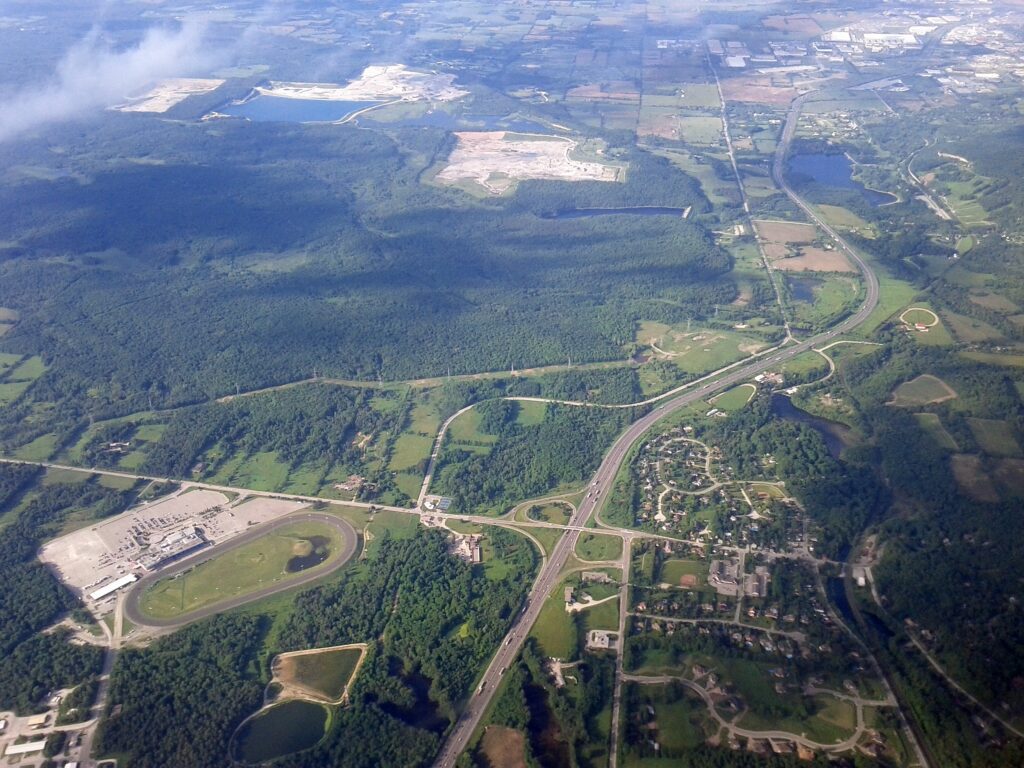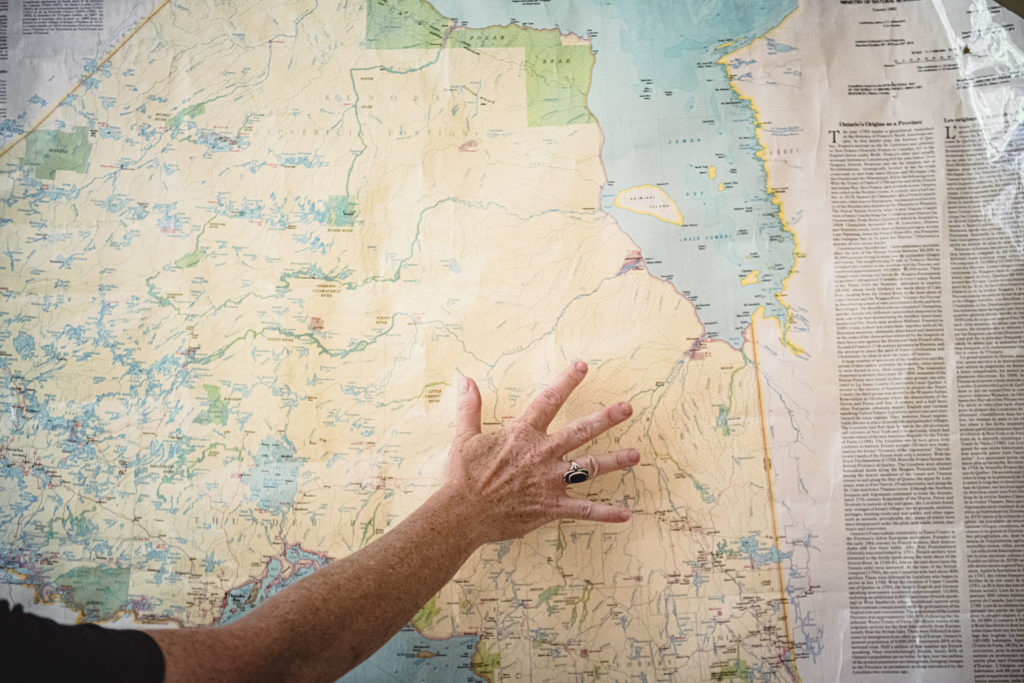
Bill 15: this ‘blank cheque’ legislation could dramatically change how B.C. approves major projects
Premier David Eby says new legislation won’t degrade environmental protections or Indigenous Rights. Critics warn...
A few days before the Ontario government delivered its latest economic update, the provincial environment minister was at COP26, the annual international summit where world leaders address the global climate crisis.
The minister, David Piccini, spent his time in Glasgow discussing the climate crisis and “using this opportunity to build international partnerships for Ontario’s clean industry,” his office said.
As the conference wrapped up its first week, the Ford government served up a fall economic statement that was scant on investments in climate action.
The fall economic statement is a precursor to the province’s annual budget, outlining how Premier Doug Ford wants to shape the province’s economic recovery from COVID-19 as Ontario gears up for its next election in 2022.
There were only four explicit mentions of climate change measures in the 198-page document, titled “Build Ontario.” Instead, its topline items are the construction of two highways — mentioned 58 times — that critics say would be environmentally destructive, as well as a contentious road to the Ring of Fire region in far Northern Ontario, which the Ford government is hoping to open up for mining.
When pressed by The Narwhal about the lack of climate details in the document, Finance Minister Peter Bethlenfalvy said the government is “doing a lot” for the environment, without offering specifics.
“We’re going to continue to focus on lowering carbon emissions,” he said. “One of the ways you do that is by building public transit and getting cars off the road. One of the ways you do that is by investing in electric vehicles.”
“We’re cleaning up parks, we’re cleaning up water, we’re cleaning up rivers and lakes, and we’re not going to relent in that regard,” Bethlenfalvy added.
The investment in new roads would put more money into Canada’s second largest sources of greenhouse gas pollution. The transportation sector makes up more than 25 per cent of the country’s total annual emissions in 2019, according to Environment and Climate Change Canada. This total is slightly less than the oil and gas sector, which made up just over 26 per cent of the country’s annual greenhouse gas pollution in 2019.
Bethlenfalvy sees the prospect of new roads and highway infrastructure differently.
“It’s a plan that dreams big but then lays out a clear path to take us there,” he said. “We are ready to build bigger. We are ready to build faster than ever before.”
Critics are unimpressed with the financial statement, noting it offers few investments in green initiatives that would help reduce environmental impacts. “The premier thinks the road to recovery from COVID-19 is paving over paradise,” said Mike Schreiner, Ontario Green Party leader.
“Ontario needs to invest in a green and caring recovery that puts people first, not highways that benefit a handful of wealthy land speculators.”
We are ready to build bigger. We are ready to build faster than ever before.
Ontario Finance Minister Peter Bethlenfalvy
Two paragraphs titled “Protecting the environment for future generations” made broad and vague pledges about how the government is “acting” to fight climate change. This includes financing public transit, weather-resistant infrastructure and energy efficiency and conservation projects through Green Bonds. But these initiatives don’t involve new funding commitments.
“A tiny paragraph on climate change, can you imagine that?” Liberal MPP Mitzie Hunter said in response. “You’ve chosen instead to double down on highways and bypasses.”
The financial document also noted the government was “growing the Greenbelt,” an often-mentioned promise that has yet to be laid out in detail. There’s also mention of “funding a portion of the cost of non-hydro renewable electricity contracts,” which, according to the 2020 provincial budget, will shift approximately 85 per cent of the cost of electricity generated under the green energy contracts from consumers to the province.
Since coming into power, the Ford government has cut a series of environmental and economic policies including cap-and-trade carbon pricing, endangered species protections, wind farms, the environmental commissioner’s office and more. The government has also said time and time again that it is serious about climate action.

Ford’s economic recovery plan hinges on the construction of the 413 and the Bradford Bypass, both of which would pass through the protected Greenbelt. The 413 would connect the Toronto suburbs of Vaughan and Milton; the bypass would run a shorter path between the two main highways leading north of Toronto. The government has said new highways would relieve congestion issues, although studies have shown that more roads don’t reduce traffic.
The government wants “shovels in the ground today,” Bethlenfalvy said, adding that neither project would be tolled. “We are saying yes to highways that will get Ontarians out of gridlock.”
For the first time Thursday, the government allocated funding for the projects — its last budget didn’t earmark funds for them at all — although it remained mum about the full costs of building the highways.
The PCs are upping the investments in its highway program to move both projects forward, to the tune of $2.6 billion more this year and $1.6 billion over the following five years. The program includes the 413, the bypass, bridge work and other highway expansion projects, and of the $1.6 billion, $474 million would go to bridges, not new highways.
Overall, the government said it has set aside $8.6 billion for highway infrastructure until 2023-2024, which likely wouldn’t be enough to get the projects built in their entirety. The 413 alone is projected to cost between $6 billion and $10 billion and the bypass would cost at least $800 million, though the government declined to confirm cost estimates Thursday.
Horwath accused the government of pushing the highways forward to benefit developers over climate concerns. Access to highways tends to drive up land values.
“There’s no doubt that the Highway 413 and the Bradford bypass are motivated for political ambition,” Horwath said.
The government pledges multiple times in the document to reduce gridlock through the construction of critical infrastructure such as transit. The province plans to spend nearly three times as much on transit (subways, trains and light-rail projects) over highways over the next 10 years. The government also promises to invest $40 million to boost manufacturing jobs for workers, without specifying how many of these will be clean or green jobs.
But these investments and promises were made previously.

The new document also says mining development in the Ring of Fire region in Northern Ontario south of Hudson Bay will drive the province’s economic recovery out of the pandemic. Deposits of minerals from the region could be used to make batteries for electric cars — in the fall economic statement, the government said it wants Ontario to be “one of North America’s premier juridictions for responsibly sourced critical minerals.” But it doesn’t allocate any new funding for the task, asking instead for the federal government to match the $1-billion Ontario has already pledged.
So far, various governments’ efforts to mine the Ring of Fire haven’t worked out. The area is located more than 500 km northeast of Thunder Bay in the James Bay lowlands. There are no permanent roads to it — the land is boggy, difficult to build on and lacks electricity. Governments have claimed the deposits in the Ring of Fire could be worth $60 billion, but that total is based on unverified information, and questions remain about whether the minerals there would be worth the cost of reaching them.
“It is time to get the road to the Ring of Fire built,” Bethlenfalvy said Thursday. “We hope the federal government is prepared to come to the table… We hope the opposition parties will stop saying no to the Ring of Fire.”
While some First Nations in the area support development, others have called for a moratorium on it, and projects there are undergoing several lengthy environmental assessments. Much of the region is peatland, a vital carbon sink and a sensitive habitat.
Though the government used the fall economic statement as an opportunity to re-up its plan to expand the Greenbelt, originally announced earlier this year, it didn’t allocate funding for it.
Get the inside scoop on The Narwhal’s environment and climate reporting by signing up for our free newsletter. On a warm September evening nearly 15...
Continue reading
Premier David Eby says new legislation won’t degrade environmental protections or Indigenous Rights. Critics warn...

Between a fresh take on engagement and our new life on video, our team is...

The public has a few days left to comment on Doug Ford’s omnibus development bill....
